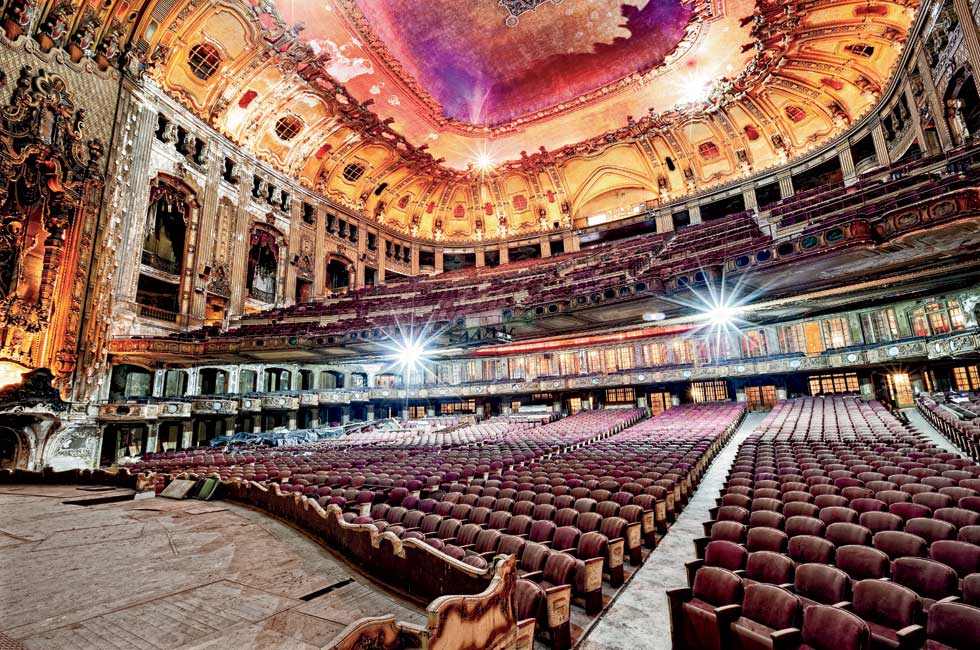
With its opening-day marquee announcing ”An Acre of Seats in a Magic City,” the 4,381-seat Uptown is the largest freestanding theatre in the country. It’s also one of the most lavish movie palaces ever built. The crown jewel of the Balaban and Katz theatre chain, the Uptown, with its marble floors, intricate frescoes, and 24-karat gold and silver leaf designs, reflects the period’s extravagances. Its opulent grand entrance is adorned with ornate pillars engraved with angelic figurines at eye level. Higher up, these creatures transition into gargoyles that glare down at the patrons. The walls of the spacious auditorium show signs of damage, chiefly caused by unrelenting water that eroded the theatre over years of neglect. Restoration efforts at the Uptown, which was purchased for a reported $3.2 million by the owners of Jam Productions through a judicial sale in 2008, have sputtered to a halt, with repair estimates nearing $70 million.
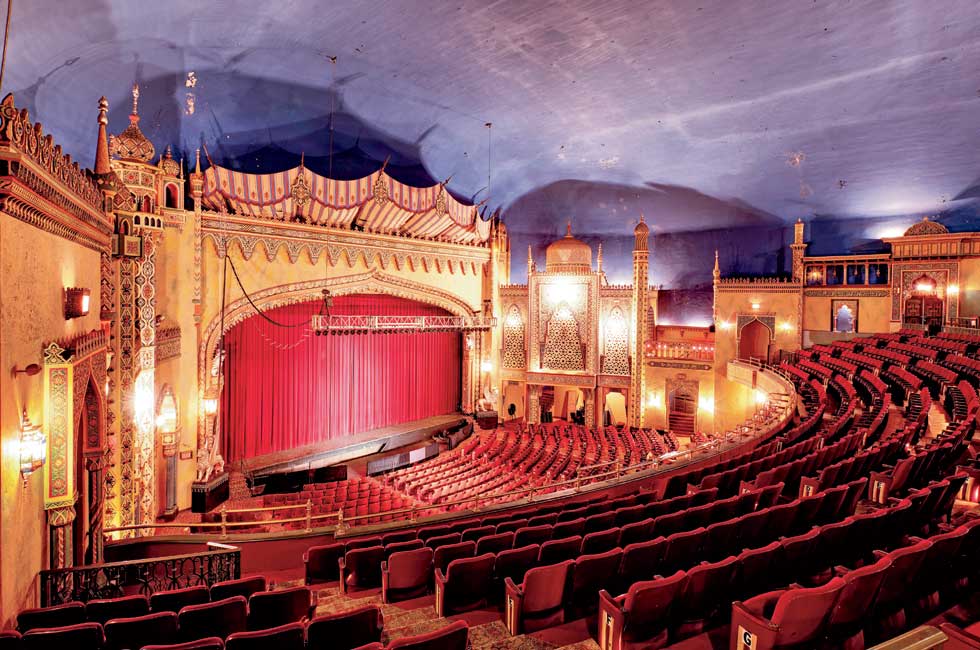
Drivers exiting the Skyway onto Stony Island Avenue may mistake the Avalon (later the New Regal) as a religious building, with its minarets and onion dome. When designing this exemplary piece of Atmospheric Moorish Revivalism, Eberson took his inspiration from an incense burner he discovered at an antiques market. The theatre’s 2,255 seats are enveloped in romanticized motifs suggestive of a Persian bazaar under a twilight sky. The Middle Eastern theme continues into the marble-tiled lobby, which includes three large carved wood murals set within massive arches. Soaring above is a flying carpet of sorts—the design of an Oriental rug painted on plaster and inlaid with patterns of cut-glass gems sitting within the recessed ceiling. Requiring minor touchups, this relatively well-maintained theatre is set to reopen in early 2013 as a live entertainment venue.
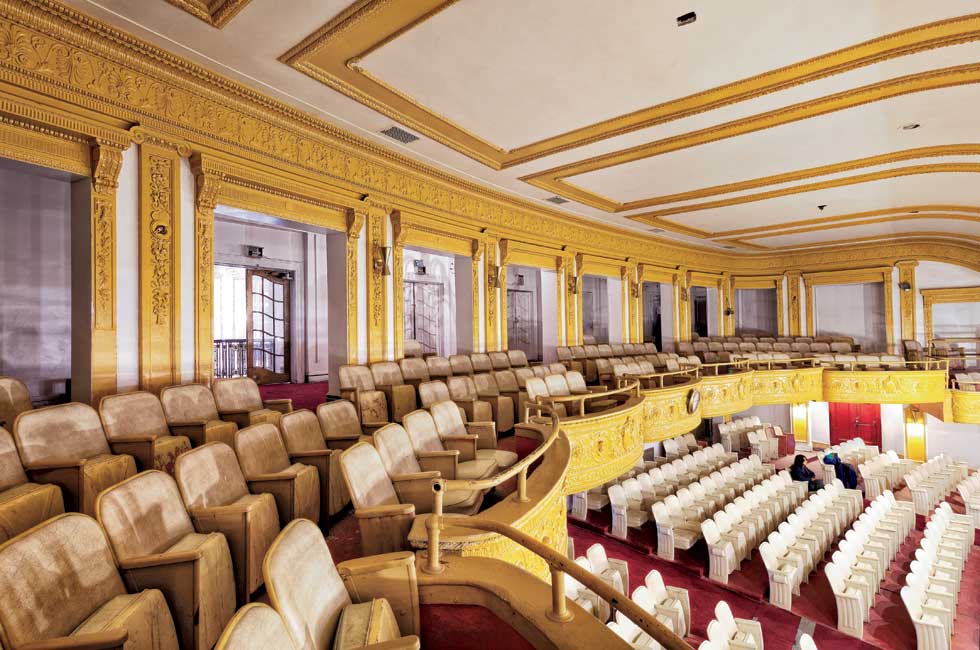
A few blocks down from the Lawndale sits the Central Park. Built by the Chicago showmen A. J. Balaban and Sam Katz, the theatre helped launch their entertainment empire. The air-conditioned 1,780-seat venue has a large center stage that was at one time flanked by two smaller ones to provide flexibility in either playing movies or staging live events. Its low-hanging balcony, clung to by a mezzanine of horseshoe-shaped boxes, was designed to create an exciting in-the-action environment for the audience. Much of the white-and-gold theatre shows little sign of its age, save for a large section of seating missing from the balcony. Though the moviegoing crowds are long gone, a small congregation gathers here on Sundays for services at the House of Prayer Church of God in Christ, which purchased the theatre in 1971.
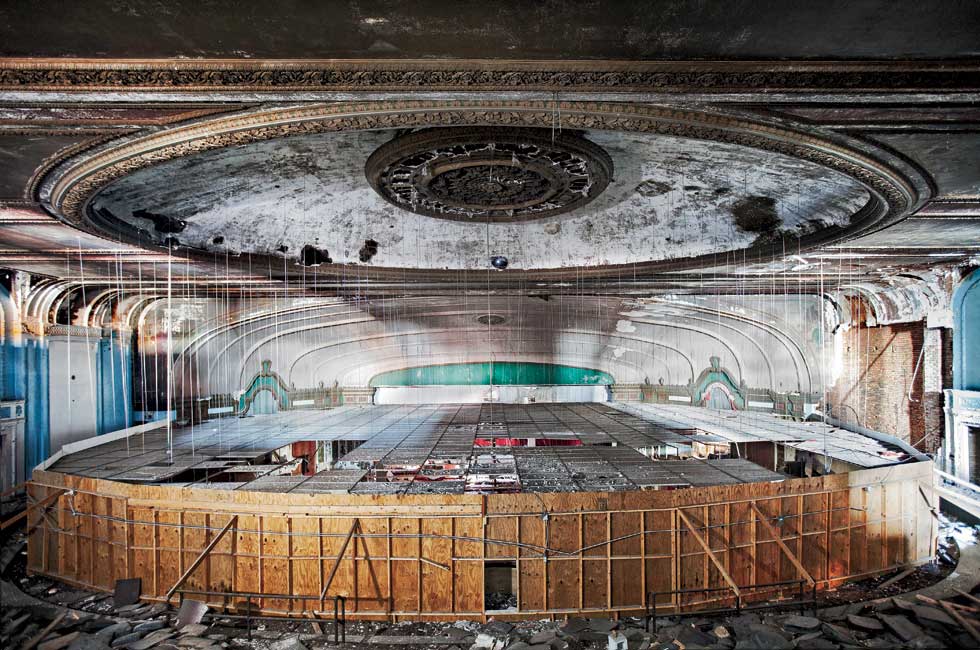
The battered 2,200-seat theatre that dominates the block on West Roosevelt Road has experienced a past as checkered as the multicolored windows that fill its large cathedral-like arch. Starting as a movie theatre showing silent films, it later survived as a Yiddish playhouse, catering to the neighborhood’s large Jewish population. Ownership changed several times, and in 1949 it was briefly renamed the Rena Theatre. Its interior is a pastiche of heavily ornamented baroque plaster. The red-carpeted second floor has caved in from years of water pouring in from an unrepaired roof. Nearly 50 years ago, during the theatre’s conversion into a church, its owners at the time installed a discordant drop ceiling to seal off the balcony. Since then, it’s been abandoned. Cook County real estate records show that the building has changed hands multiple times in recent years between the city, a private owner, and a bank. In November 2012, the theatre’s owner became someone named Samuel Alexander, according to the records. Efforts to reach him were unsuccessful.
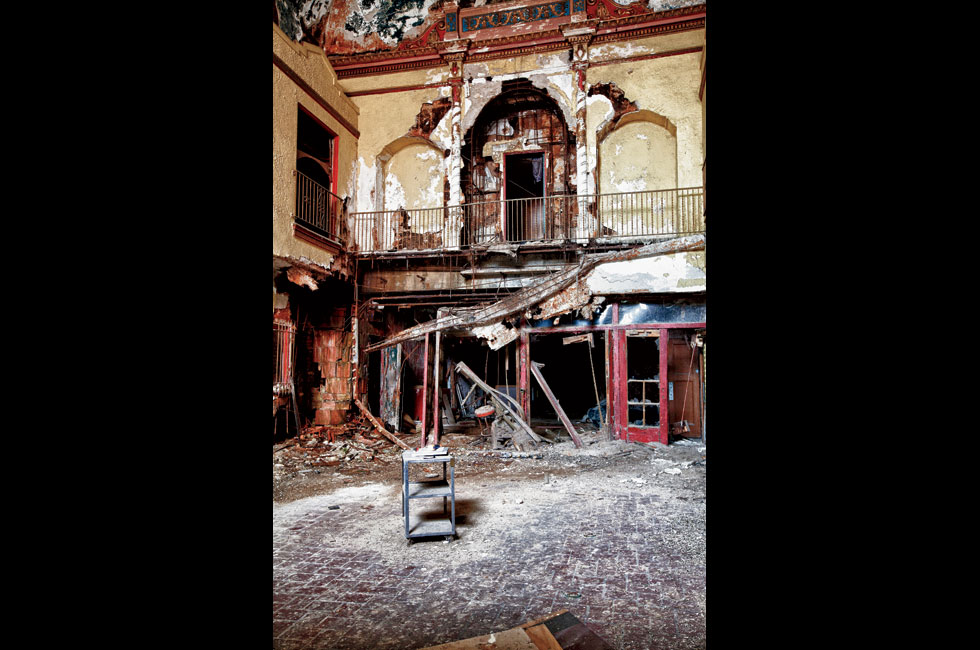
Like its sister, the Music Box Theatre in Lake View, the 1,500-seat Ramova was designed in the so-called Atmospheric style; the auditorium ceiling gives the illusion of a deep blue sky with “stars” that glitter in anticipation of the evening’s events. This outdoors motif continues into the lobby, with its saffron plasterwork and loggia, which resembles the walls of an Italian courtyard. Altogether, this creates the effect of watching a film in an open-air palazzo—a sense further accented by the theatre’s missing seats, 90 percent of which have been removed. What remains is a grid of ankle-breaking holes punched through the concrete floor, originally created to allow the flow of hot air to warm guests. Shuttered for more than 20 years, the structure is currently owned by the city, which has thus far spared it from the wrecking ball.
Essay by Roger Ebert
Most of the theatres in this photo essay were still in business when I started reviewing movies for the Sun-Times. In those days a lot of movies still opened in “the nabes,” of ten as double features, and as a newcomer to town, I found going to view them was a way of exploring the city. These majestic palaces would cost unimaginable amounts today, but those still standing are, as you can see, falling into ruin.
Whenever I hear the names of these wonderful places, I remember one of the most unforgettable moviegoing experiences I’ve ever had. Michael Kutza opened his 1975 Chicago International Film Festival at the Uptown, at Broadway and Lawrence, by showing One Flew Over the Cuckoo’s Nest, with Jack Nicholson, who was at the height of his fame. The Ken Kesey novel was a cult favorite, but no one in the audience had any idea what to expect, and only the cineastes would then have known the name of its Czech director, Milos Forman.
The theatre was one of the largest in America. Every seat was sold. The lobby before the show was vibrating with excitement. To call that screening a success would be a cruel understatement. I’ve never been part of a more excited movie audience. They laughed, they cheered, they applauded individual lines, and Nicholson did what Hitchcock said a movie was supposed to do—he played the audience like a piano.
It was a great movie, yes. Was it as great as it seemed that night? The waves of human energy from the audience bounced off the screen and reinforced themselves. It was Michael Douglas’s debut as a producer. His father, Kirk, had optioned the rights to the novel and perhaps envisioned himself as R. P. McMurphy. But Hollywood was in the throes of takeover by a new generation. A foreign director was brought in. Stars were born. It was nominated for nine Oscars and was the first film in 41 years to sweep the categories of best picture, director, actor, actress, and screenplay.
I ran into Michael Douglas afterward, surrounded by admirers in the lobby. “No matter how long I’m in the business and no matter how many pictures I produce,” he told me, “I know I’ll never experience another night like this one.” It was what every filmmaker dreams of: a big picture on a big screen with a big audience in a big theatre. Words like “boffo” still meant something.
The Uptown still stands at Broadway and Lawrence, its decaying interior like a mausoleum. The laughter has faded. The smell of popcorn no longer drifts in from the lobby. Some landmarks have been restored: the Chicago, the Oriental, the Bismarck (now the Cadillac Palace). All over Chicago, the bones and the memories of our other movie palaces linger. For them, the last picture show has closed.
Correction: January 22, 2013
Since this article ran, readers have let us know that the screening of One Flew Over the Cuckoo’s Nest described by Ebert in this essay took place not at the Uptown Theatre but at the Granada Theatre, located then at 6427 North Sheridan Road. Ebert says he misremembered the venue. We regret the error.


